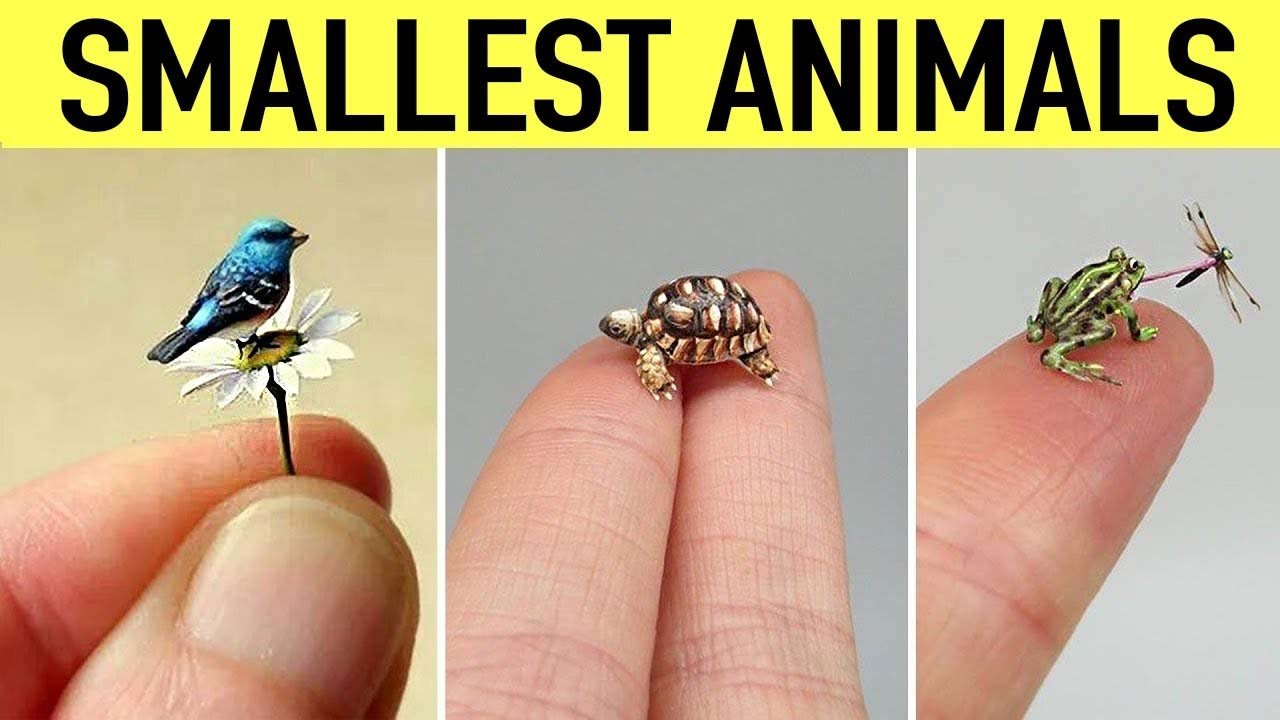When we think of animals, our minds often drift to the grand scale—majestic elephants, soaring eagles, or powerful tigers. However, the animal kingdom is also home to some incredibly tiny creatures, so small that many are nearly invisible to the naked eye. These minuscule marvels are not only fascinating due to their size but also because of the unique adaptations that allow them to thrive in their respective environments. Let’s dive into the world of the smallest animals on Earth, where being small is a superpower.
The Bacterial World: Mycoplasma genitalium
Though bacteria are technically not animals, they are living organisms that set the stage for understanding life at a microscopic scale. Among the tiniest, Mycoplasma genitalium is a type of bacteria that is considered one of the smallest known forms of life. It has a diameter of just 200–300 nanometers, meaning millions could fit on the head of a pin. Despite its size, it has enough genetic material to perform all the basic functions of life, making it a marvel of biological efficiency.
Marine Minutiae: The Paedocypris Fish
The smallest vertebrate in the world is the Paedocypris, a tiny fish found in the peat swamps of Southeast Asia. The females of the species can grow as small as 7.9 millimeters (about 0.31 inches) in length. This fish has a reduced body structure, lacking many bones found in other fish, which helps it navigate its challenging environment. Despite its small size, the Paedocypris is a crucial part of its ecosystem, playing a role in the food web and contributing to the biodiversity of its habitat.
Insect Extraordinaire: Fairyflies
Fairyflies, a group of parasitic wasps, are among the smallest insects on Earth. The smallest known species, Dicopomorpha echmepterygis, measures a mere 0.139 millimeters (0.0055 inches) in length. These tiny insects are parasitoids, meaning they lay their eggs inside other insects’ eggs, which their larvae then consume. Their minuscule size allows them to access and exploit environments that larger organisms simply cannot, demonstrating that being small can be a significant advantage in the insect world.
Tiny Tardigrades: The Indestructible Micrometers
Tardigrades, also known as water bears or moss piglets, are microscopic animals that typically range between 0.3 and 0.5 millimeters in length. Despite their tiny size, tardigrades are renowned for their resilience. They can survive extreme conditions, including freezing temperatures, intense radiation, and even the vacuum of space. Tardigrades are found in various environments, from deep-sea trenches to the tops of mountains, showing that even the smallest creatures can conquer the most extreme environments.
Flea-Sized Frogs: Paedophryne amauensis
In 2009, researchers discovered Paedophryne amauensis in Papua New Guinea, a species of frog that holds the title of the smallest known vertebrate on land. Adult frogs of this species measure just 7.7 millimeters (0.3 inches) in length, smaller than a housefly. These frogs are so tiny that they live among leaf litter on the forest floor, where their size allows them to hunt for tiny insects and other invertebrates. Their discovery has expanded our understanding of biodiversity in tropical ecosystems and highlighted the importance of Mighty Mites: The Parasitic Dust Mite
The house dust mite, Dermatophagoides pteronyssinus, is another minuscule creature, measuring around 0.2 to 0.3 millimeters. These mites thrive in household dust and feed on dead skin cells shed by humans and animals. Although they are too small to be seen with the naked eye, dust mites play a significant role in household allergens, making them one of the most impactful tiny creatures in our daily lives.
Conclusion: Celebrating Small Wonders
The smallest animals on Earth are a testament to the incredible diversity of life. From invisible bacteria to barely-there frogs, these tiny creatures have evolved to occupy every corner of our planet, often playing crucial roles in their ecosystems. While they may be small in size, their impact is immense, reminding us that in the grand tapestry of life, every thread, no matter how thin, is essential. Whether you’re a biologist, a nature enthusiast, or simply curious about the world, there’s much to appreciate in these pint-sized wonders.
